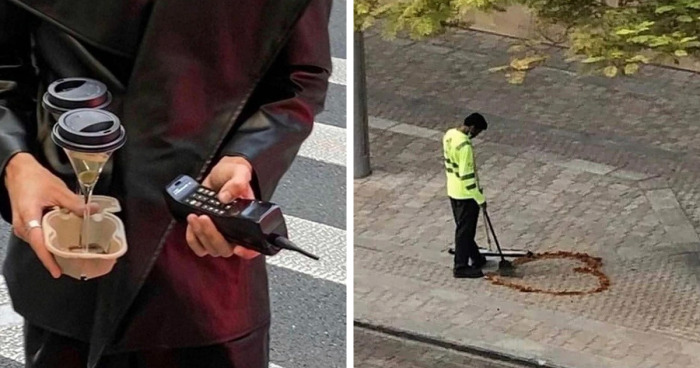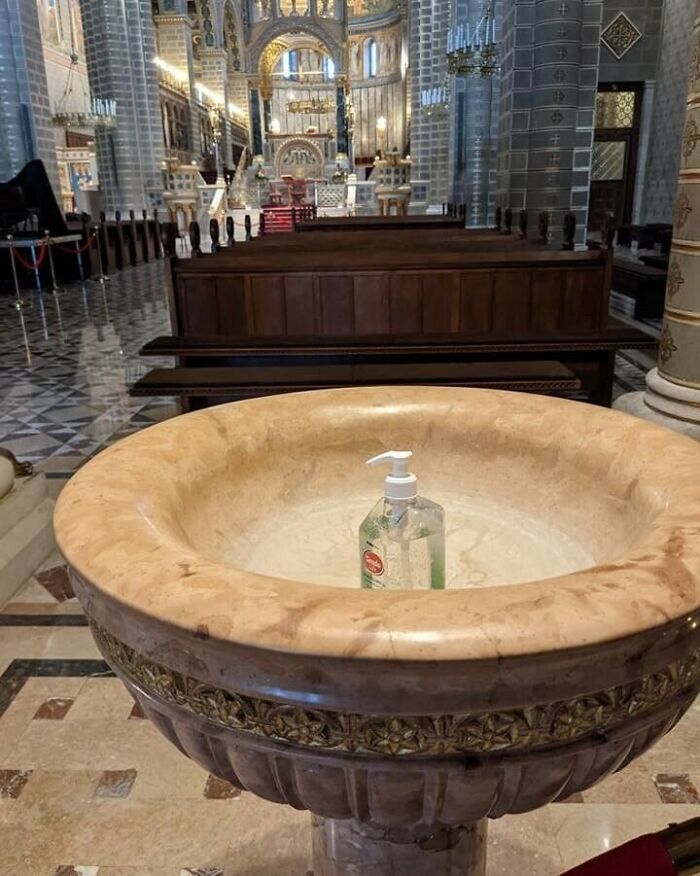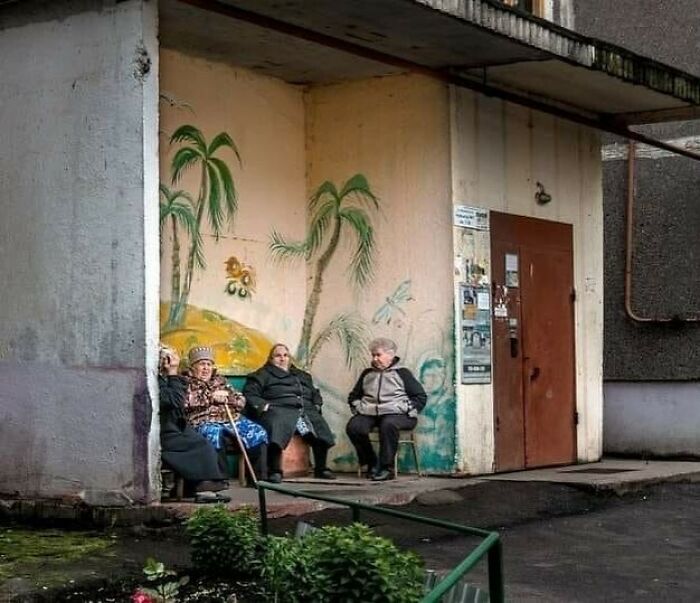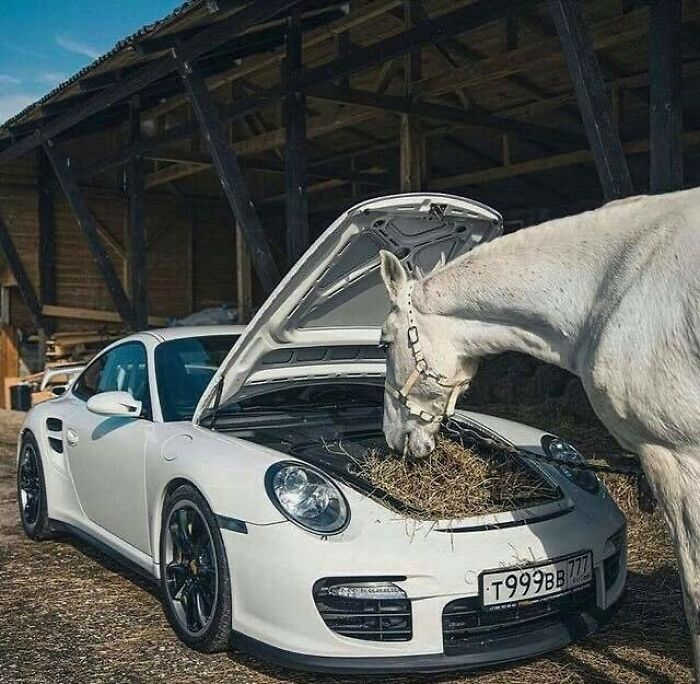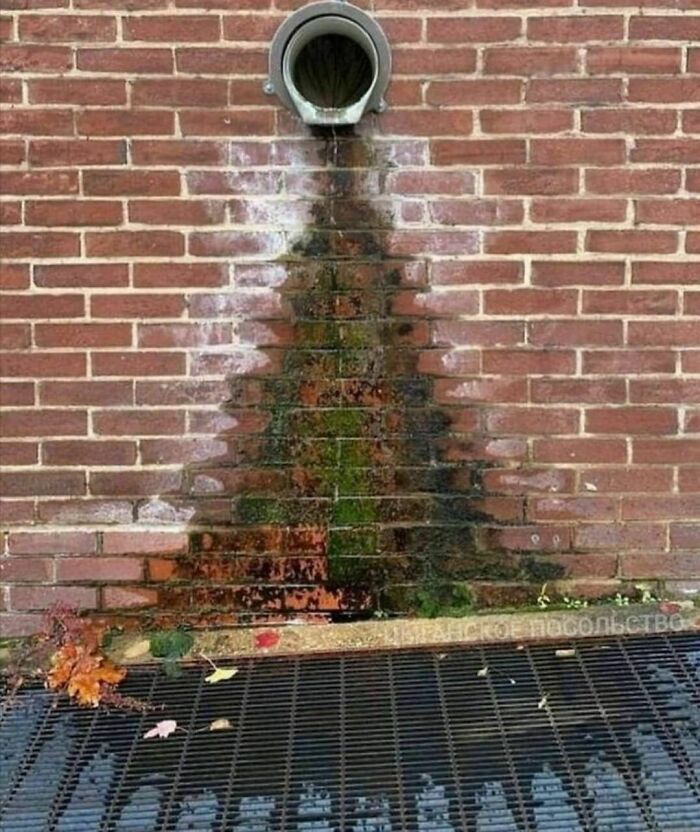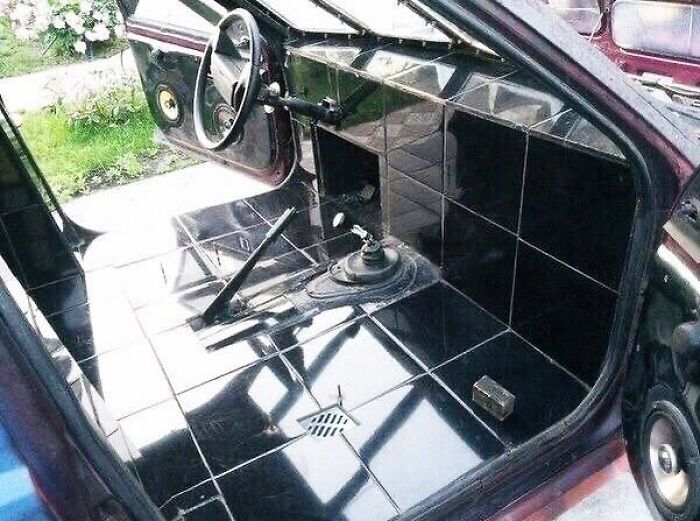It’s an unfortunate fact that we create a lot of trash. We aren’t completely alone in that regard, termites and beavers create refuse around their ‘construction sites.’ But we are alone when it comes to non-biodegradable trash. The silver lining is our ability to be creative with almost everything one can and will find, say, on an average city street.
Sometimes the creations and compositions are too good not to share, so people submit them to the “Trash and Culture” Facebook page. If that combination intrigues you, then scroll down and enjoy a selection of the best submissions. Be sure to upvote your favorites and comment on your theories on the origins of some of these.
This post may include affiliate links.
Some of the examples here feature a sort of brutal contrast between large, faceless constructions and smaller, human-made decorations. This underscores the alienation people sometimes feel in areas or neighborhoods that are fully designed from the top down. The planned district of the USSR invoked this feeling among its residents, with uniform blocks, shops, and kindergartens from Vladivostok on the Pacific coast, to East Germany.
In the countries that were established or liberated with the fall of the USSR, these areas are generally referred to as raion, from the French ‘rayon’ representing their uniform shape and appearance. Sometimes this refers to an actual administrative subdivision, but normally it’s simply a name for a sleeper district. These raions are one of the main sources of all those horrible, gray, and dreary images of the USSR that we see today.
While different in so many ways, sometimes the cookie-cutter suburban districts of North America also invoke a feeling of loneliness. Let’s face it, imagine living in an ocean of identical houses, with identical grass-green lawns, trapped if something happens to your car. The monotony of suburban life is a common theme in a lot of western media, from films like Disturbia and Vivarium to music, like Arcade Fire’s album ‘The Suburbs.’ That being said, as home ownership becomes more unaffordable, we might look back at these works with a bit of scorn, since a house with a yard appears like a larger luxury than it used to.
The dependency on cars is a large part of suburban living. With the exception of Western Europe where public infrastructure is very well developed, most suburban life revolves around driving. Partially, this is a result of the road systems present in suburban areas. Urban areas tend to have regimented grids, with some exceptions (looking at you, London) which east both public and private traffic flow. Suburban areas use a hierarchical model, with a main road, with “less important” branches, which branch into even less important sub roads.
The branch metaphor really applies here, as the smaller roads all stem from a larger one. Since they are not interconnected, it’s hard to design public transport that can reach the various areas effectively. This creates a lot of car dependency so typical of North American life. Now, let’s not go as far as to say cars are bad, cars are a lot of fun. From joyriding to the general feeling of freedom, cars can help us in a lot of ways. Issues only arise when all public infrastructure ends up designed around driving.
Established in 1956, the Highway Trust Fund takes its resources from a federal tax on fuels. Since Americans love to drive, you can imagine the amount of money generated each year. In 2006 alone, the fuel tax brought in $28.2 billion. This money is earmarked for highway construction and maintenance. It’s easy to see why roads and highways became so prevalent since the fund had no choice but to spend this money on car infrastructure.
We reached out to the curators over at "Trash and Culture" to learn a bit more about their processes and preferences. It’s more complicated and it’s more about feeling rather than technical choice. The concept is a blend of style, absurdity, aesthetics, and controversy. It’s really difficult to explain, cause it is a feeling and not a universal formula. It is easier to explain by showing a few good examples of pictures really suitable for the page content," they said when we inquired how they make their selections.
When asked about the prevalence of Balkan and Eastern European imagery, they had a simple answer. "We are originally based in Eastern Europe, and I personally lived in the Balkans too, maybe that’s is the reason why there are so many pictures from these regions because we like these aesthetics. Or it’s just a coincidence because we don’t care where and how picture or video was made as long as it fits pages’ concept."
"Cattius IV of Mudiniom surveyed over the vast kingdom that they now ruled over. Any humans to come within 100000 kilometres would perish."
The Colossal Colon... Its on Youtube should you wish to view😁
I'm trying to understand the theme here. Like, trashy? Or excessive? Except not all of them are necessarily about excess. But not all of them are about having 'trashy' poor taste, either, some of the pictures are more about dystopia, or birds, or a random window, or sometimes just literal trash. I feel like there are a lot of different unrelated categories, and I don't know what's going on.
I feel like the pictures should belong to another headline, maybe??
I'm trying to understand the theme here. Like, trashy? Or excessive? Except not all of them are necessarily about excess. But not all of them are about having 'trashy' poor taste, either, some of the pictures are more about dystopia, or birds, or a random window, or sometimes just literal trash. I feel like there are a lot of different unrelated categories, and I don't know what's going on.
I feel like the pictures should belong to another headline, maybe??

 Dark Mode
Dark Mode 

 No fees, cancel anytime
No fees, cancel anytime 


